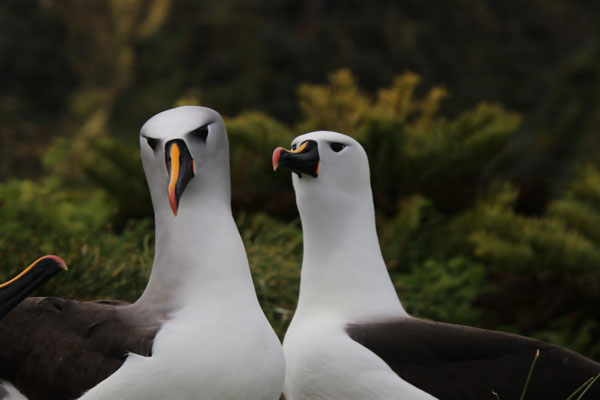First land sighting of Indian yellow-nosed albatross
Report from RSPB staff on Gough Island in January 2019
Michelle Risi has reported the first confirmed sighting on Gough Island of an Indian yellow-nosed albatross on Gough Island during field work on 17th January 2019. Previously the birds have only been spotted around Tristan da Cunha at sea.
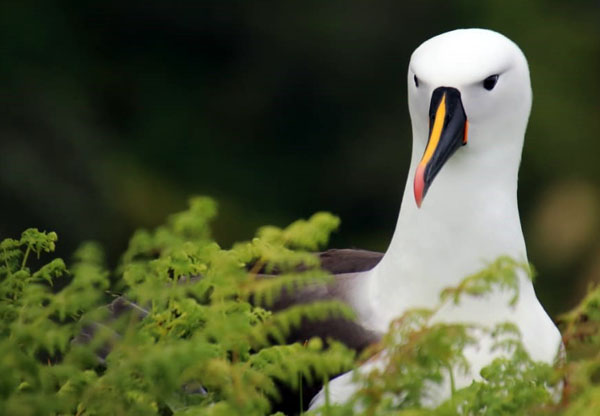
Close-up of the Indian yellow-nosed albatross: Photo Chris Jones
There are two sub-species of yellow-nosed albatross, defined by their region of breeding and by very subtle physical characteristics which make distinguising between the two very hard.
Well-known on the Tristan da Cunha Islands is the endemic Atlantic yellow-nosed albatross or Molly, Thalassarche chlororhychus.
The Indian yellow-nosed albatross Thalassarche carteri breeds on the Southern Indian Ocean Islands of Prince Edward, Crozet, Kerguelen, Amsterdam and St Paul. Definitely not in the country of India!
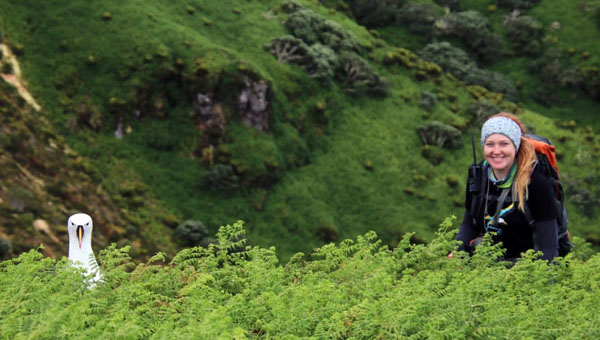
Michelle Risi by the Indian yellow-nosed albatross: Photo Chris Jones
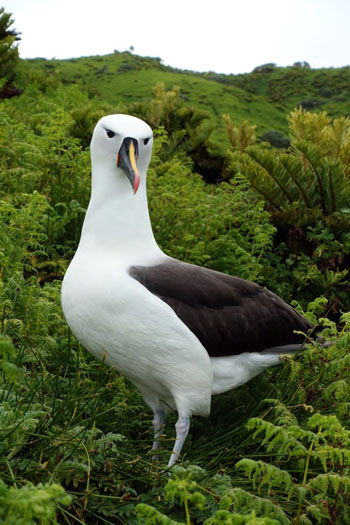 |
Those, like the Editor, who received these stunning photos on 18th January will need a detailed list of distinguishing features to identify the Indian yellow-nosed albatross from the ubiqutous Mollies that are seen flying and on the ground from August-April on Tristan, Nightingale, Inaccessible and Gough Islands and at sea. How to differentiate the Indian
|
Definitive yellow-nosed albatross identification guide
Robert Flood from the Fitzpatrick Institute of African Ornithology, University of Cape Town has kindly sent and given us permission to reproduce from the multi-media guide
(http://www.scillypelagics.com/multimedia-guides)
a page comparing Atlantic and Indian yellow-nosed albatross which is shown below.
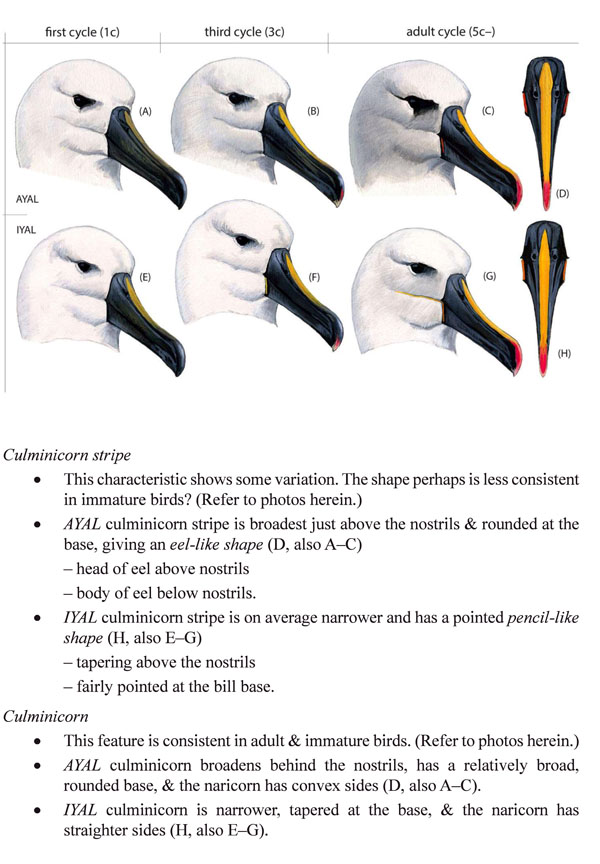
Abbreviations explained: AYAL Atlantic Yellow-nosed, IYAL Indian Yellow-nosed Albatross;
cycle refers to the annual moult cycle and is useful to age birds,
so 1C is the first moult cycle and the bird is a juvenile,
3C is an older immature, and adult plumage is attained by the 5C.
Can you spot the difference?
Below is a stunning photo by Delia Davies of three Atlantic yellow-nosed albatross
or Mollies on the slopes of Nightingale Islands' High Peak in December 2015.
Middle or Alex Island can be seen offshore.
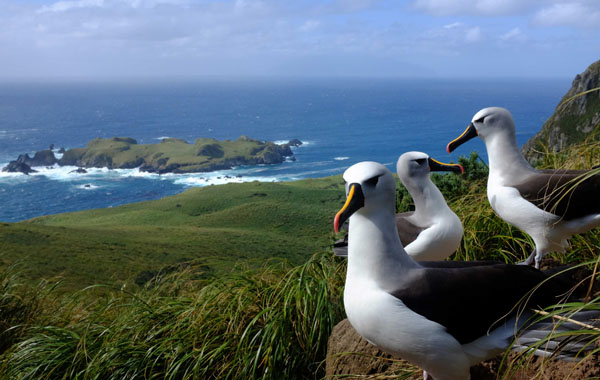
Problematic for photo identification are the varied light conditions and the age of albatross being compared.
It is likely that all these photos show young, non-breeding adults which have similar state plumage.
Your turn -
Now that we've shown the differences:
below is another of Christopher Jones' photos showing
the Indian yellow-nosed albatross alongside a local Atlantic yellow-nosed albatross
We trust you can spot which is which?
